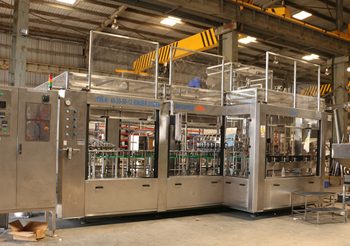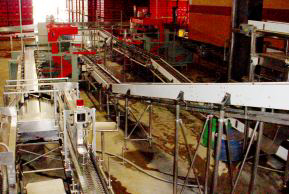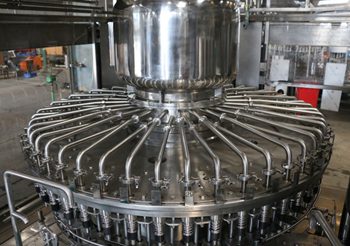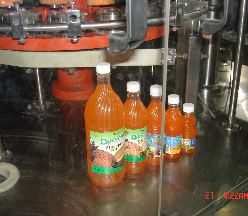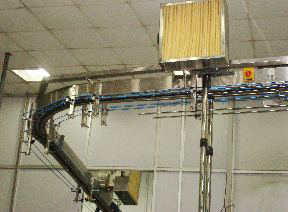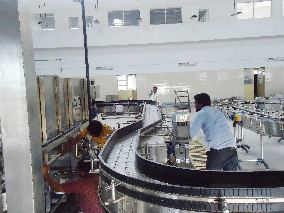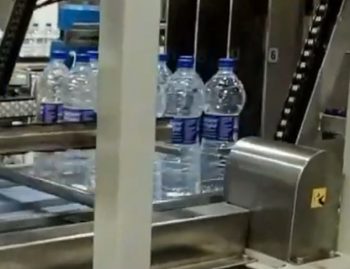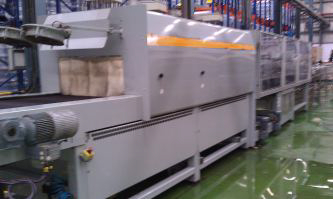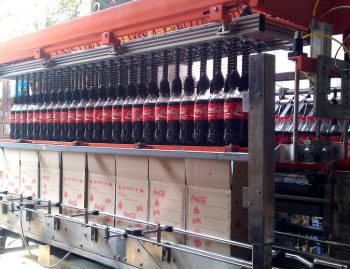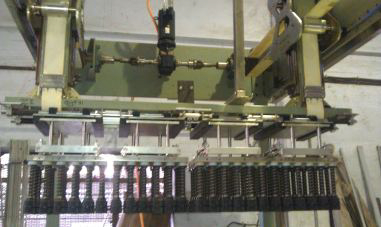
Are you tired of dealing with bulky, cumbersome materials that are a hassle to transport? Look no further than the incredible technology of pneumatic conveying systems! These innovative systems offer a convenient and efficient way to move dry bulk materials through pipes using compressed air or gas. Whether you’re in the manufacturing industry, food processing, or even agriculture, pneumatic conveying systems can revolutionize your operations. In this blog post, we will explore the ins and outs of pneumatic conveying systems, including their types, components, advantages and disadvantages, common applications, as well as maintenance and troubleshooting tips. So buckle up and get ready to dive into the world of seamless material transportation with pneumatic conveying systems!
What is a Pneumatic Conveying System?
Pneumatic conveying systems are a game-changer when it comes to transporting dry bulk materials. But what exactly are they? Essentially, pneumatic conveying systems utilize compressed air or gas to move materials through a pipeline from one location to another. This eliminates the need for manual labor and traditional mechanical conveyors.
There are two main types of pneumatic conveying systems: dilute phase and dense phase. In dilute phase systems, the material is suspended in a high-velocity airstream, which allows for quick and efficient transportation. On the other hand, dense phase systems use low-velocity air or gas to gently push the material through the pipeline at a slower pace.
The components of a pneumatic conveying system include an air compressor, receiver vessel, piping network, pressure release valve, filter separator, and dust collector. Each component plays a crucial role in ensuring smooth operation and preventing any potential issues like blockages or contamination.
One of the major advantages of using pneumatic conveying systems is their ability to transport materials over long distances with minimal loss or damage. Additionally, these systems offer flexibility in terms of routing options as pipes can be easily maneuvered around existing infrastructure.
However, like any technology, there are also some disadvantages associated with pneumatic conveying systems. They require careful consideration during design and installation to ensure optimal performance. Maintenance costs may also be higher compared to other conveyor methods due to factors such as filter replacements and energy consumption.
In various industries ranging from pharmaceuticals and chemicals to plastics and agriculture, pneumatic conveying systems find wide-ranging applications where efficient material handling is paramount. Whether it’s transferring powders between production stages or loading/unloading bulk trucks or railcars – these versatile devices streamline operations while maintaining product integrity.
To keep your pneumatic conveying system running smoothly over time requires regular maintenance checks including inspections for leaks or worn-out components like hoses; cleaning filters regularly; monitoring pressure levels within acceptable limits – all contribute towards maximizing system efficiency and preventing unexpected downtime.
In the next section, we will delve deeper
Types of Pneumatic Conveying Systems
Pneumatic conveying systems are widely used in various industries for the transportation of dry bulk materials. There are different types of pneumatic conveying systems, each suited to specific applications and material characteristics.
One common type is the dilute phase system, which uses low-pressure air to transport materials through a pipeline. This system is ideal for handling lightweight and free-flowing materials such as powders and granules. It operates by suspending the particles in an airstream and conveying them at high velocities.
On the other hand, dense phase conveying systems use higher pressures and lower velocities to move materials that are heavier or more abrasive. In this system, the material is pushed through the pipeline in batches or plugs rather than being suspended in an airstream.
Another type is vacuum conveying, which relies on negative pressure to pull materials into a pipeline. Vacuum conveyors are commonly used for transferring smaller quantities of material over shorter distances.
Pressure pot or pressure vessel systems operate by pressurizing a tank with compressed air to push the material out of it into the conveyor line. These systems are suitable for transporting fragile or heat-sensitive materials that require gentle handling.
Each type of pneumatic conveying system has its advantages and disadvantages depending on factors such as material properties, distance requirements, and desired flow rates. Understanding these different types can help businesses choose the right system for their specific needs.
Components of a Pneumatic Conveying System
A pneumatic conveying system consists of several key components that work together to transport materials from one point to another using air pressure. These components include:
1. Air Compressor: This is the heart of the system, responsible for generating and supplying compressed air.
2. Material Source: The source where the material is stored or produced, such as a silo or hopper.
3. Conveying Pipeline: A network of pipes that transports the material through the system.
4. Airlock Valve: Also known as rotary valve, it controls the flow of material into and out of the pipeline while maintaining an airtight seal.
5. Filtration System: Removes any dust or particles from the conveyed material before it reaches its destination.
6. Blower/Material Receiver: Creates airflow in the system and receives and collects the conveyed material at its destination point.
7. Control Panel: Controls and monitors various parameters like airflow rate, pressure, and temperature within the system for optimal performance.
Each component plays a vital role in ensuring smooth operation and efficient transportation of materials through a pneumatic conveying system.
Advantages and Disadvantages of Pneumatic Conveying Systems
Pneumatic conveying systems offer numerous advantages that make them a popular choice for industries handling bulk materials. First and foremost, these systems provide efficient transportation of materials without the need for manual labor or heavy machinery. The use of air pressure allows for quick and easy movement, saving both time and effort.
Another advantage is the flexibility of pneumatic conveying systems. They can be easily customized to fit the specific needs of different industries, whether it’s transporting powders, granules, or even abrasive materials. Additionally, these systems are highly adaptable to various distances and heights, making them suitable for both short-distance transfers within a facility or long-distance transfers between different locations.
One significant benefit is the minimal risk of material contamination during transport. Since there are no moving parts in contact with the material being conveyed, there is less chance of product degradation or cross-contamination. This makes pneumatic conveying ideal for industries that require hygienic processes such as food processing or pharmaceutical manufacturing.
However, like any system, pneumatic conveying also has its disadvantages. One major drawback is its dependency on consistent airflow and pressure levels to maintain optimal performance. Fluctuations in air supply can affect the system’s efficiency and may require additional monitoring and adjustments.
Another challenge lies in controlling dust emissions during material transfer. Fine particles can escape into the surrounding environment if not properly managed through filtration systems or other measures designed to minimize dust release.
Common Applications of Pneumatic Conveying Systems
Pneumatic conveying systems are widely used across various industries due to their efficiency and versatility. Here are some common applications where these systems play a crucial role:
1. Food Industry: In the food processing industry, pneumatic conveying systems are utilized for handling powdered ingredients such as flour, sugar, spices, and additives. These systems ensure the hygienic transfer of materials without contamination or product loss.
2. Pharmaceutical Industry: Pneumatic conveying is extensively used in pharmaceutical manufacturing for transporting powders, granules, and capsules between different processing stages. The closed-loop design of these systems prevents cross-contamination and maintains product integrity.
3. Chemical Industry: Pneumatic conveying systems find wide application in chemical plants for transferring bulk materials like plastic pellets, resins, dyes, and detergents efficiently and safely. Their ability to handle hazardous substances makes them an ideal choice in this industry.
4. Cement Industry: Pneumatic conveying plays a vital role in cement production by transporting raw materials (such as limestone, clay) from storage silos to mixers or kilns with precision control over material flow rates.
5. Mining Operations: In mining operations, pneumatic conveyors are employed to transport minerals like coal dust or ore concentrate over long distances within the facility or even underground mines.
6. Waste Management: Pneumatic conveying is also utilized in waste management processes for handling solid waste materials like sawdust or municipal waste efficiently without manual intervention.
7. Packaging Industry: Pneumatically conveyed powders or granular materials can be easily transported from storage silos to packaging machines using air pressure-based conveyor systems ensuring accurate filling during packaging operations.
Each industry has unique requirements when it comes to pneumatic conveying system applications; therefore designers must tailor the system specifications accordingly to achieve optimal performance!
Remember that understanding your specific needs will help you select the right type of pneumatic conveying system for your industry, ensuring seamless material handling and improved productivity.
Maintenance and Troubleshooting Tips for Pneumatic Conveying Systems
To ensure the optimal performance of your pneumatic conveying system, regular maintenance is crucial. Here are some tips to help you keep your system running smoothly:
1. Regular inspections: Conduct routine inspections of all components to identify any signs of wear or damage. Replace any worn-out parts promptly to prevent further issues.
2. Clean filters: Cleaning the filters regularly will prevent clogging and maintain proper airflow within the system.
3. Lubrication: Proper lubrication of moving parts such as bearings and seals reduces friction and extends their lifespan.
4. Check for leaks: Inspect the entire system for air leaks that can affect efficiency. Fix any leaks immediately to avoid energy wastage.
5. Control humidity levels: Moisture in the conveyed material can cause blockages or corrosion in the system’s pipes and equipment. Implement measures to control humidity levels, such as using dryers or desiccants if necessary.
6. Train operators: Ensure that operators are trained on how to operate and maintain the pneumatic conveying system properly, including recognizing warning signs of potential issues.
